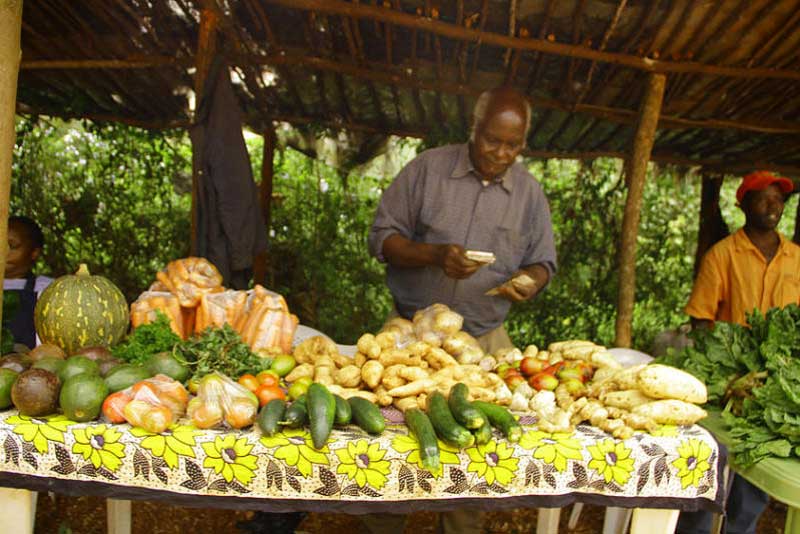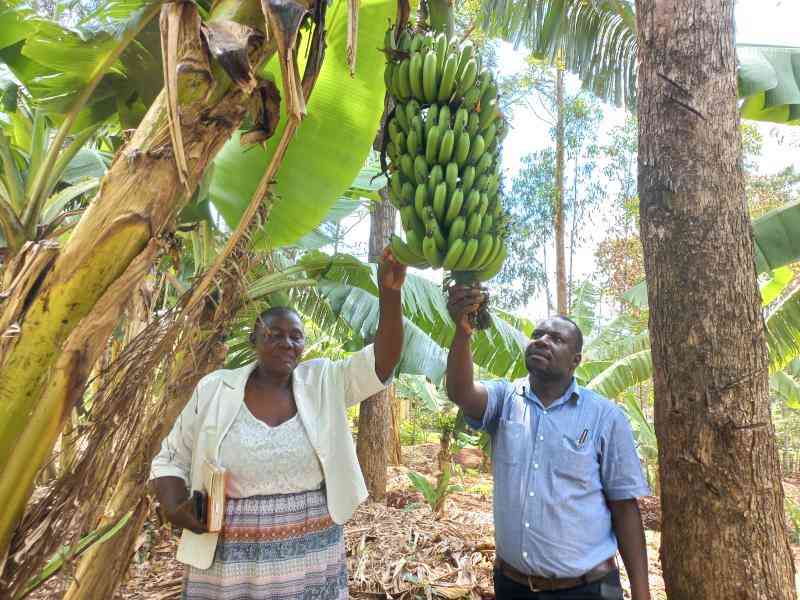
In Malthusian economics, the future of the world’s population looks extremely bleak. Rapid growth in population outstrips food supply. Population would grow exponentially, said Malthus, while food supply would only grow in a linear fashion.
Fortunately, this bleak version of economics has not come to pass. Modernisation of food production ensured that the envisaged mass hunger was allayed, and today, the world is more or less producing surplus food; the only challenge is in equitable distribution.
Food security holds the key to the prosperity of any country, but providing growing populations with safe, sufficient and nutritious food remains a challenge. Reliance on seasonal subsistence farming and the slow adoption of modern farming means that chronic malnutrition and acute food shortages will remain a reality. But many nations are doing something about it. In Kenya for instance, the agriculture sector remains the highest foreign income earner, and contributed 31 percent of the GDP in 2017 and 32 percent in 2016.
Despite agriculture’s key role in addressing the food security problem, the sector faces myriad challenges such as climate change, water scarcity, diminishing arable land, soil degradation and rural-urban migration. To deal with the issue of food security, we need to look beyond policy actions to innovation.
Poverty alleviation
One way to achieve and maintain sustainable agricultural production and food security is through use of information communication technologies (ICT). A study in the Journal of Development and Agricultural Economics indicates that “ICT plays a significant role in a country’s development and the strategic application of ICT to the agricultural sector … offers the best opportunity for economic growth and poverty alleviation”. Agriculture, like other sectors, is broad and has many actors along the value chain who can benefit from the precision, efficiency and accuracy that information and communication technologies provide.
According to the Food and Agriculture Organisation (FAO), technology enables agricultural stakeholders to make more informed decisions, which in turn makes farming more modern and profitable. Similarly, agriculture benefits from the concept of e-agriculture.
Mobile phones, for instance, have become an indispensable tool for disseminating information. This has given rise to applications that collect and share agricultural information. Farmers can use mobile phones to receive text messages with market information on prices, supply and demand. Increased access to correct and timely information and data enhances the capacity of agricultural stakeholders to make decisions that improve their mainstay and thereby play a major role in ensuring food security.
These tools
Digifarm is one such example. The innovative platform provides crucial information, and allows access to inputs and the much-needed credit to Kenya’s smallholder farmers. Technology is also making it much easier for farmers to access financial services such as loans and saving platforms. Mobile payment systems and mobile banking are allowing growers to save, use and even send money with ease.
In the past, seasons were consistent and predictable. This made it easy for farmers to know when to till, plant and harvest. But recent weather patterns have become haphazard and less predictable thanks to climate change. IT tools can assist farmers to adapt by improving prediction and monitoring.
These tools can help farmers research data around weather patterns, soil and humidity, expected growth, and other factors that increase productivity, minimise costs and ultimately make agriculture more profitable. Technology is also good for collecting and analysing data that helps researchers, governments and farmers to make informed decisions about what and when to plant.
According to the 2018 Economic Survey, food worth Sh150 billion went to waste, an unacceptable scenario in a food insecure country where hundreds of families still go to bed hungry. The survey prepared by the Kenya National Bureau of Statistics shows that 1.9 million tonnes of food was discarded.
For Kenya to realise its ambitions on food security, a deliberate investment in technology, which facilitates access to relevant data, markets and financial services, will be critical. If done right, agriculture can help meet the United Nations’ SDG number two of ending hunger, achieving food security and improving nutrition and promoting sustainable agriculture. This in turn can be the engine that fuels rural development, improves resilience to climate change, grows employment opportunities, and ultimately grows our economy.
Stay informed. Subscribe to our newsletter
Mr Tugee is SEACOM General Manager ENEA Region
 The Standard Group Plc is a
multi-media organization with investments in media platforms spanning newspaper
print operations, television, radio broadcasting, digital and online services. The
Standard Group is recognized as a leading multi-media house in Kenya with a key
influence in matters of national and international interest.
The Standard Group Plc is a
multi-media organization with investments in media platforms spanning newspaper
print operations, television, radio broadcasting, digital and online services. The
Standard Group is recognized as a leading multi-media house in Kenya with a key
influence in matters of national and international interest.
 The Standard Group Plc is a
multi-media organization with investments in media platforms spanning newspaper
print operations, television, radio broadcasting, digital and online services. The
Standard Group is recognized as a leading multi-media house in Kenya with a key
influence in matters of national and international interest.
The Standard Group Plc is a
multi-media organization with investments in media platforms spanning newspaper
print operations, television, radio broadcasting, digital and online services. The
Standard Group is recognized as a leading multi-media house in Kenya with a key
influence in matters of national and international interest.









